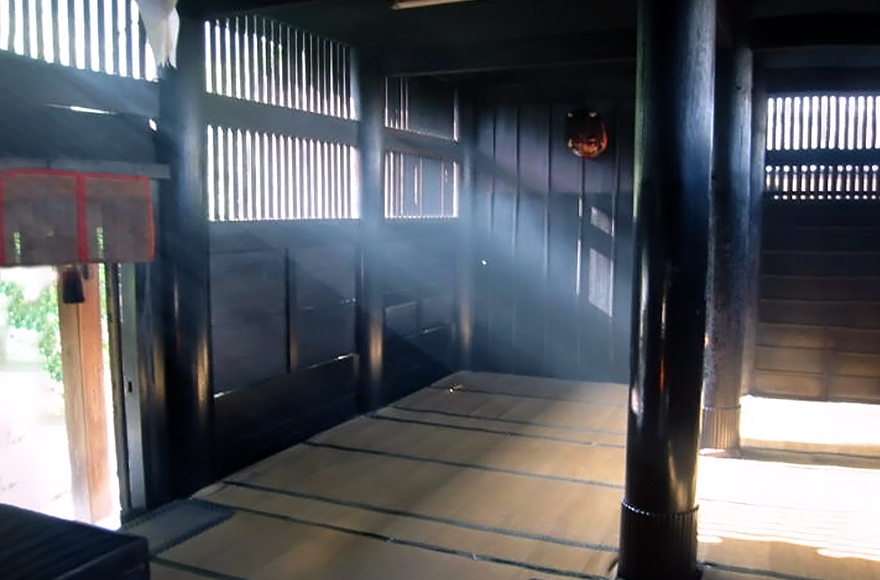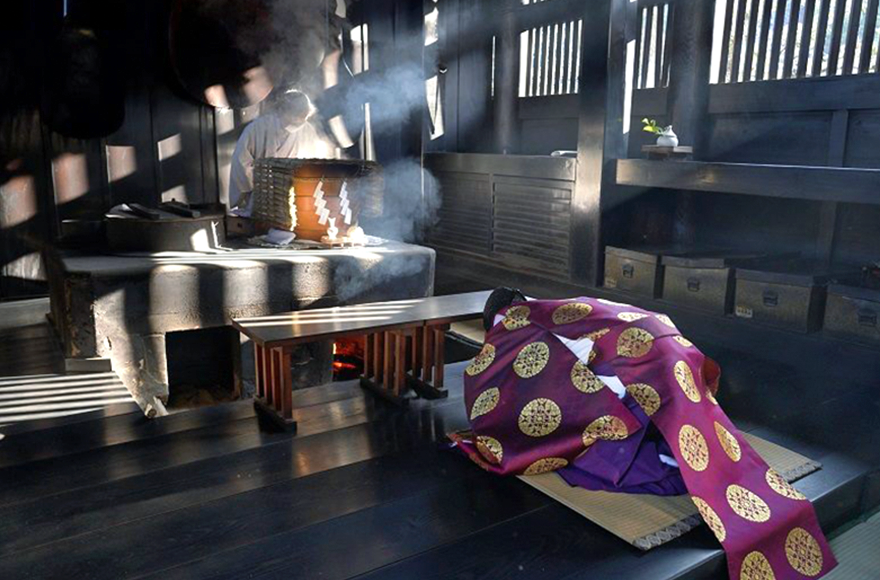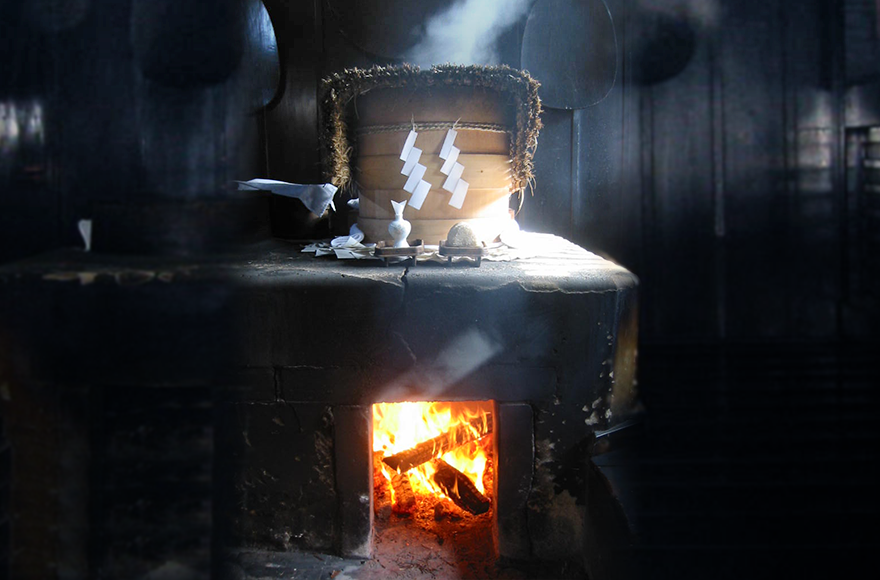The origin of this ritual comes from the story that our shrine's kami (gods or deities) defeated Ura. Prince Kibitsuhiko exposed Ura's head to the public after beheading him. Ura's head mysteriously never stopped roaring and shouting. Even though he had his retainers feed the head to the dogs and turn it into a skull, it continued to roar. Then it was buried under the cauldron of Okamaden Hall, but the roaring voice never stopped and sounded even throughout the neighboring villages.
When the prince was exhausted with this situation, the spirit of Ura appeared in his dream and said, "Let my wife, Princess Aso, a priestess of the shrine in Aso, cook food at your Okamaden Hall. If something should happen to this world, please gather in front of the cooking stove. When fortune comes, a cauldron on the stove will sound beautifully. When misfortune comes, it will sound furiously. You, appear as a kami of miraculous power after leaving this world. I will be your first messenger to reward and punish people.” After the prince did as he was told, the roar ceased and peace was restored. This is the origin of the Narukama Ritual, which is still conducted as needed today.
The old woman who serves this ritual at the Okamaden Hall. is called azome, the same as the name of the woman who is said to have been loved by Ura. At the foot of Kinojo Castle was the village of Aso, and women from that village have served the ritual for generations. Casting works have been flourishing in this village since a long time ago. It used to be the duty and also the privilege of the casting workers of this village to replace the large cauldron of the Okamaden Hall when it broke or became old.
This ritual is conducted by two people, a priest and an azome. The azome fills the cauldron with water and boils it. On top of the cauldron is a bamboo steamer, from which steam is always rising. The ritual starts with enshrining a talisman in front of the cooking stove. The azome sitting across the cooking stove from the priest shakes the brown rice in the bowl inside the bamboo steamer as the priest recites ritual prayer. After a while, a sound like a demon's roar comes out and stops around the time the priest finishes the ritual prayer. The divination is done based on the volume and length of the sound coming from the cauldron, but neither the priest nor the azome say anything about the answer.


